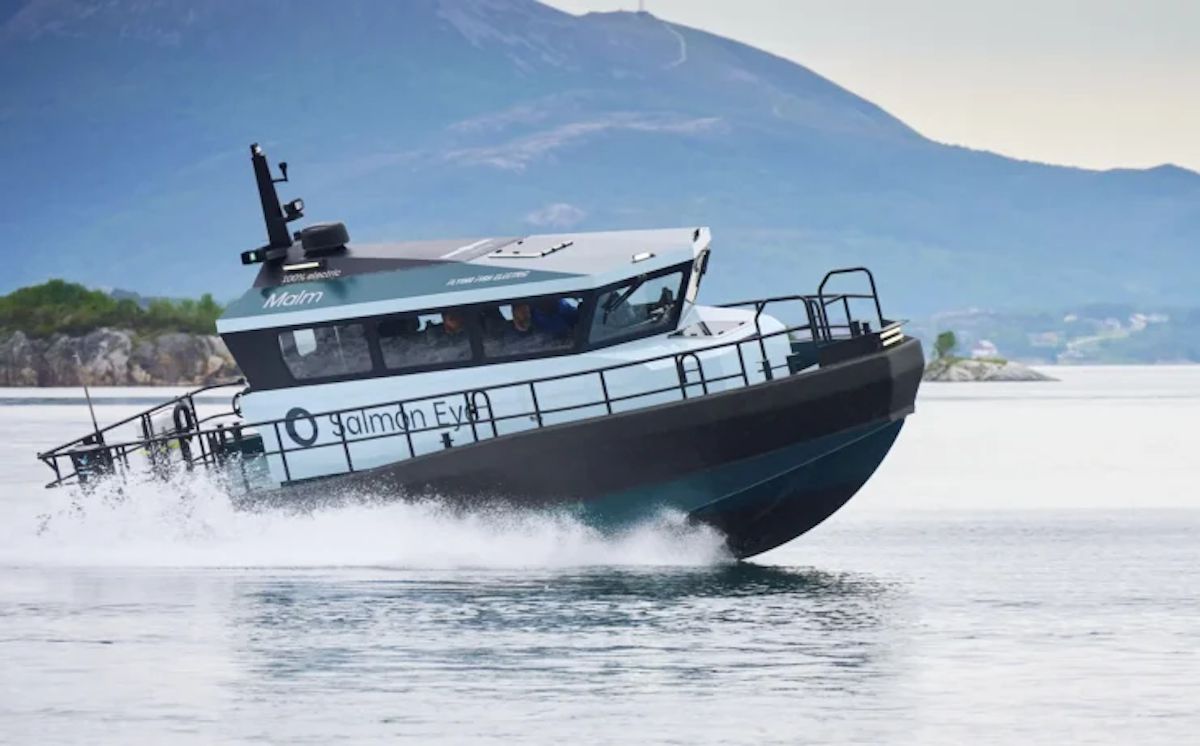The Next Step in Canada’s Fight Against Climate Change? Its Fishing Fleet

Image – The Malm, one of Evoy’s Salmon Eye electric vessels.
Credit – Evoy Electric Motor
By: Matt Dykstra
As the world grapples with the escalating impacts of climate change, the effects on Canada’s coastal communities are increasingly obvious and severe.
Extreme weather events on the East Coast are now more frequent as the warming waters of the North Atlantic allow hurricanes to maintain their strength further north. Indeed, Nova Scotia is still recovering from the destruction caused by Dorian and Fiona.
Meanwhile, fish species are migrating poleward in search of cooler waters, leading to unexpected ecological changes, including the increased presence of equatorial fish and even some shark species on the eastern seaboard. And a recent study co-authored by Oceans North shows that if emissions are not drastically reduced, some of Canada’s most valuable commercial fish stocks—such as lobsters, scallops, and snow crabs—are among those that will suffer the most.
Canada’s fisheries have a lot at stake in the fight against climate change—but for fishing operators and boat owners just trying to make a living on the ocean, there is also a new opportunity to confront this challenge head-on.
By embracing the decarbonization of its domestic fleet and supporting the adoption of electric and hybrid-electric propulsion systems, Canada could not only meet its 2030 emission-reduction targets but also generate economic activity and create jobs that would benefit coastal and Indigenous communities the most. However, achieving the economic and environmental benefits of electrifying Canada’s workboats requires ambitious partnerships between government and industry.
The technology is ready now. Battery-electric and hybrid-electric propulsion systems are available today and widely recognized as the most deployable solution for coastal and near-shore vessels such as ferries, tugboats and workboats. Moreover, the propulsion technology can match the peak performance of any diesel system on the water, achieving high speeds while being whisper quiet. For workers who spend 12 hours per day hauling up traps on the back of lobster boats, the lack of noxious fumes is quite literally a breath of fresh air. In Canada, successful examples of electrification include SAAM Towage’s fleet of electric tugs in Vancouver and the five new fully electric, zero-emission ferries purchased for expanding passenger service in Halifax. These projects demonstrate the feasibility and benefits of electrification, providing a forward-looking blueprint for broader adoption.
But the real untapped potential lies in electrifying Canada’s entire fleet of workboats. More than half of Canada’s fleet of 80,000 vessels are workboats operating across more than 900 small craft harbours in our communities.
The emissions reduction is worth it. Electrifying this fleet could eliminate almost 900,000 tonnes of carbon dioxide equivalent (CO2e) emissions per year, according to the federal Marine Emissions Inventory Tool. Electric and hybrid-electric systems could also help reduce the 9.3 million tonnes of CO2e that other Canadian ships and commercial vessels produce each year, which is the same as roughly two million gas-powered vehicles, or all the cars in Montreal.
And the economic potential is just as impressive. Currently valued at $10 billion, the global market for electric vessels is projected to grow to $30 billion by 2030. Countries like Norway and the UK are leading this transition with new investments while Canada has yet to fully capitalize. This hesitancy is largely due to a lack of awareness, programming, and financing needed to catalyze buy-in among coastal communities and marine industries. Existing federal programs, such as Transport Canada’s Green Shipping Corridors Fund, are geared towards large ocean-going vessels that are greater than 150 gross tonnes representing only 5 per cent of Canada’s total registered vessels.
Canada could be building these next-generation vessels, competing with the thousands of electric boats on the water in Europe today. But without funding for demonstration projects that are proven capable of putting in an honest day’s work, commercial fishing operations are hesitant to go all-in on these new systems. That’s why the Government of Nova Scotia’s recent investment of $6.5 million in a new Fisheries and Aquaculture Energy Efficiency Innovation Fund is a good first step toward allowing Canadians to see this technology in action on the water, erasing any skepticism about the viability of electric boats, especially in more traditional fishing communities.
This work can and should be replicated on a national scale. Oceans North is asking the Government of Canada to support the fishing industry in its efforts to adopt zero-emission alternatives to burning marine diesel. As Canada climate-proofs its small craft harbours, it must use this opportunity to facilitate the adoption of electric fishing vessels by ensuring that new wharves are built to accommodate future growth in electric charging infrastructure as well as playing a proactive role in commercial demonstration projects through capital grants for marine chargers and electric boats.
By partnering with Indigenous and coastal communities, vessel operators, boatbuilders, naval architect firms and more, Canada can use its long history of marine innovation to create jobs, embrace new market opportunities, and prepare itself for economic and environmental success in a net-zero future.
Canada simply cannot afford to miss the boat on marine electrification. By investing in its domestic marine fleet, Canada can protect its fisheries and pioneer the next generation of marine technologies while honouring its maritime legacy.
Matt Dykstra is a senior climate campaigner with Oceans North and is based in Edmonton, Alberta.
